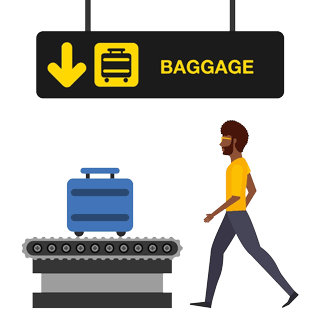Introduction
Almost every aspect of the global economy depends on transportation of goods, from everyday items to complex industrial materials. However, some goods pose significant risks to human health, safety, and the environment if not handled properly. To ensure the safe and secure movement of hazardous materials, the Dangerous Goods Regulations (DGR) have been established. In this blog, we will explore what Dangerous Goods Regulations are, why they are crucial, and how they safeguard people and the planet.
Understanding the Dangerous Goods Regulations (DGR)
The Dangerous Goods Regulations (DGR) are a set of international guidelines that govern the transportation of hazardous materials by air, sea, road, and rail. These regulations protect individuals, property, and the environment from potential hazards associated with dangerous goods transportation.
The International Air Transport Association (IATA) and the International Maritime Organization (IMO) are among the prominent organizations that oversee and update the Dangerous Goods Regulations regularly to reflect the latest industry standards and safety practices.
The Importance of the Dangerous Goods Regulations
1. Safety First: The primary objective of DGR is to prioritize safety in the transportation of dangerous goods. These regulations establish strict guidelines for the packaging, labelling, and handling of hazardous materials to minimize the risk of accidents, spills, or explosions during transit.
2. Protecting the Environment: Hazardous materials, if mishandled, can lead to severe environmental consequences, such as soil and water contamination, air pollution, and ecosystem damage. DGR ensures that such goods are transported in a manner that minimizes the potential impact on the environment.
3. Consistency in Global Trade: With an increasingly interconnected world, goods are transported across international borders every day. Dangerous Goods Regulations provide uniform guidelines and standards that facilitate smooth and secure transportation across different countries and regions.
Key Components of the Dangerous Goods Regulations
1. Classification: DGR categorizes dangerous goods into different classes based on their specific risks and properties. These classes include explosives, gases, flammable liquids, toxic substances, infectious substances, radioactive materials, and more.
2. Packaging: Proper packaging is essential to prevent leaks, spills, and exposure during transportation. DGR mandates specific packaging requirements for each class of dangerous goods to ensure their containment and protection.
3. Labelling and Marking: Clear and standardized labels are used to indicate the presence of dangerous goods, their class, and potential hazards. Additionally, packages must display the appropriate shipping marks and hazard labels for easy identification and handling.
4. Documentation: Comprehensive documentation is a crucial aspect of DGR. Shippers must provide accurate and detailed information about the contents of each shipment, including proper shipping names, UN numbers, and emergency response instructions.
5. Training and Certification: Personnel involved in the transportation of dangerous goods must receive specialized training and obtain appropriate certifications. This ensures that they are equipped to handle and respond to emergencies effectively.
Conclusion
To ensure the safe and secure transportation of hazardous materials around the world, hazardous goods regulations play a vital role. By adhering to these regulations, we can safeguard human lives, protect the environment, and maintain our interconnected supply chains.
As responsible global citizens, it is essential for individuals and businesses involved in dangerous goods transportation to keep current with the latest DGR guidelines and always prioritize safety and compliance. By doing so, we can contribute to a safer and more sustainable world. This is where global trade benefits can be realized without compromising safety and environmental protection.
